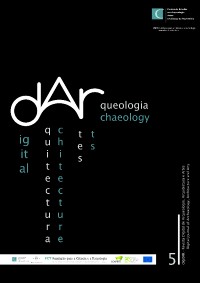Please use this identifier to cite or link to this item:
https://hdl.handle.net/10316.2/44441| Title: | The intangible heritage of Ait Atta tribes in the Southern Morocco and Zemmour tribes in the Central Plateau | Authors: | Lakhal, Chaymae ElKhabous, Bouchra |
Issue Date: | 2018 | Publisher: | Imprensa da Universidade de Coimbra | Abstract: | Most of Moroccan tribes were characterized by traveling in search of pastures to cater for the needs of cattle pasture. So, by their repetitive movements, it was caused some conflicts among themselves. It was only the results of practising the farming under the pressures of authorities. Thus, they began to know the kind of stability in the regions that they resorted to them. Despite this shift on the level of production systems, the conflict continues to fester over the resources, which were offered by the space and mainly represented in pastures and water, and the other as in the case with the tribes of Ait Atta and Zemmour. Consequently, they were prompted to put a Charter called the Tadda or Tatta in order to avoid disputes and conflicts and peacefully take advantage from economic resources, which are provided, by the space. Besides, the Tatta played an important role in stabilizing the peace and solidarity between tribes or between a family group tribe (subfraction) with another family group tribe. And, its implications extend to this present time. Furthermore, the Al-amazigh tribes retained those values that have become to reflect its identity as well as its heritage value which have made them cohesive despite the transformations that took place since the beginning of the 20th century. Due to this important subject, we will try to treat the importance of the Tada convention of Al-amazigh tribes and its impact on agricultural activity especially the grazing, in the tribes of south-east (Ait Atta) and the tribes of the central plateau (Zemmour) so as to view more on its position as well as its various geographical spaces. In this context, some questions arise in this principal issue, which we will try to answer later: - What is meant by the Tada convention? - What are the reasons for putting this convention? - What is its impact on agricultural activity especially grazing; on the relationships as well as the social ties with the unit spatial of tribes? Keywords: Al-amazigh, Tada convention, family groups (Subfractions), the tribes of Zemmour, the tribes of Ait Atta. | URI: | https://hdl.handle.net/10316.2/44441 | ISSN: | 2182-844X (PDF) | DOI: | 10.14195/2182-844X_5_20 | Rights: | open access |
| Appears in Collections: | digitAR: Revista Digital de Arqueologia, Arquitectura e Artes |
Files in This Item:
| File | Description | Size | Format | |
|---|---|---|---|---|
| artigo_20.pdf | 670.06 kB | Adobe PDF |  |
Items in DSpace are protected by copyright, with all rights reserved, unless otherwise indicated.
